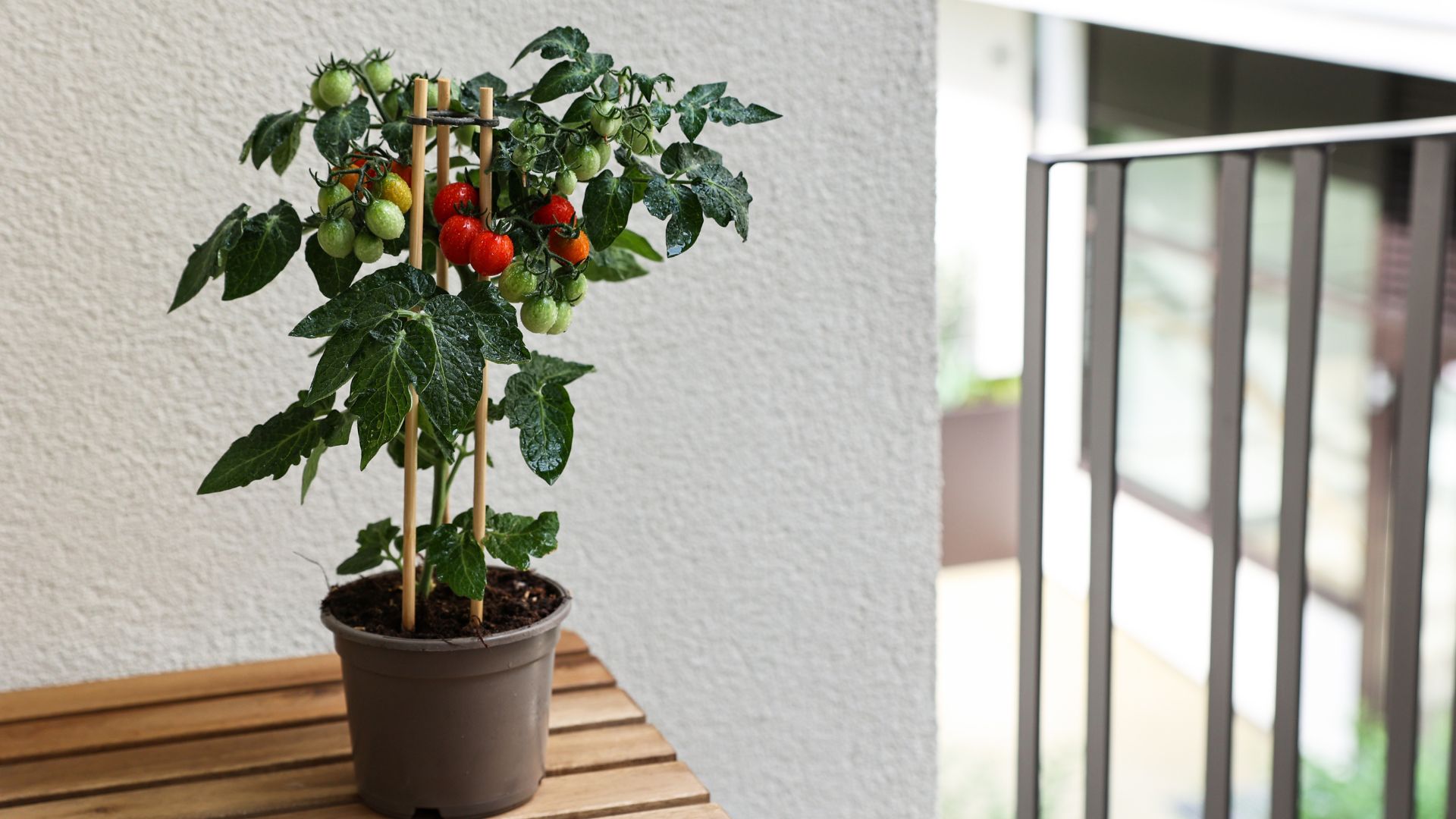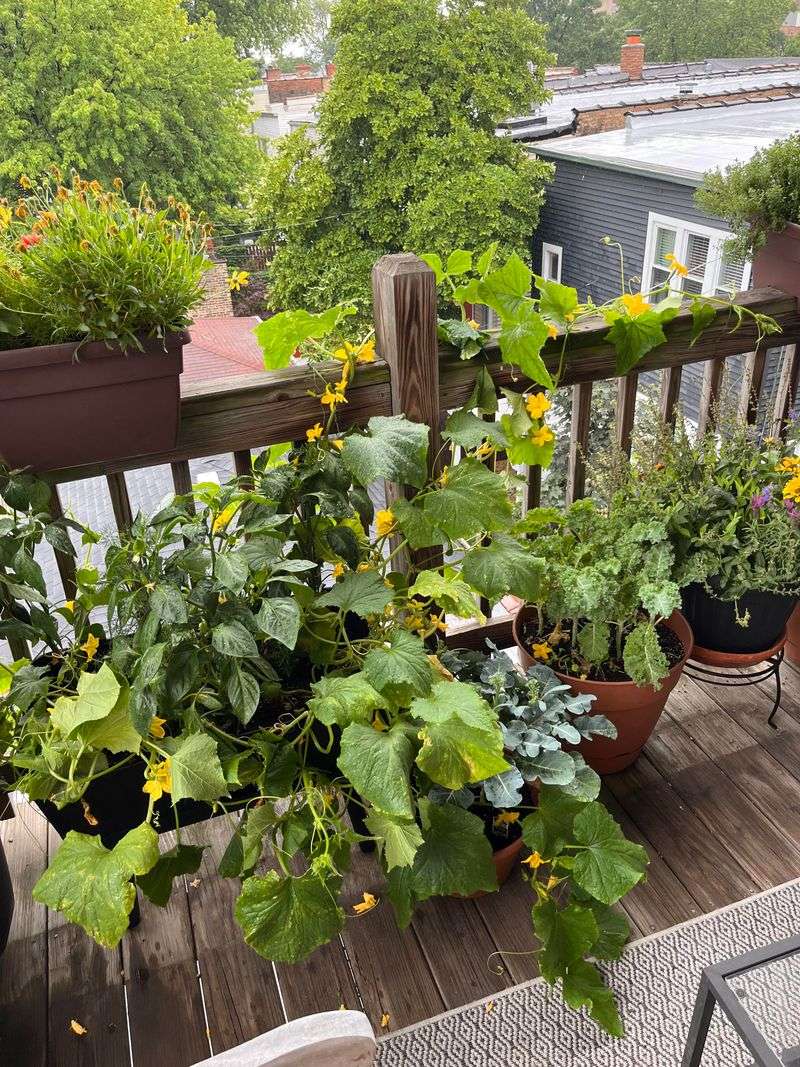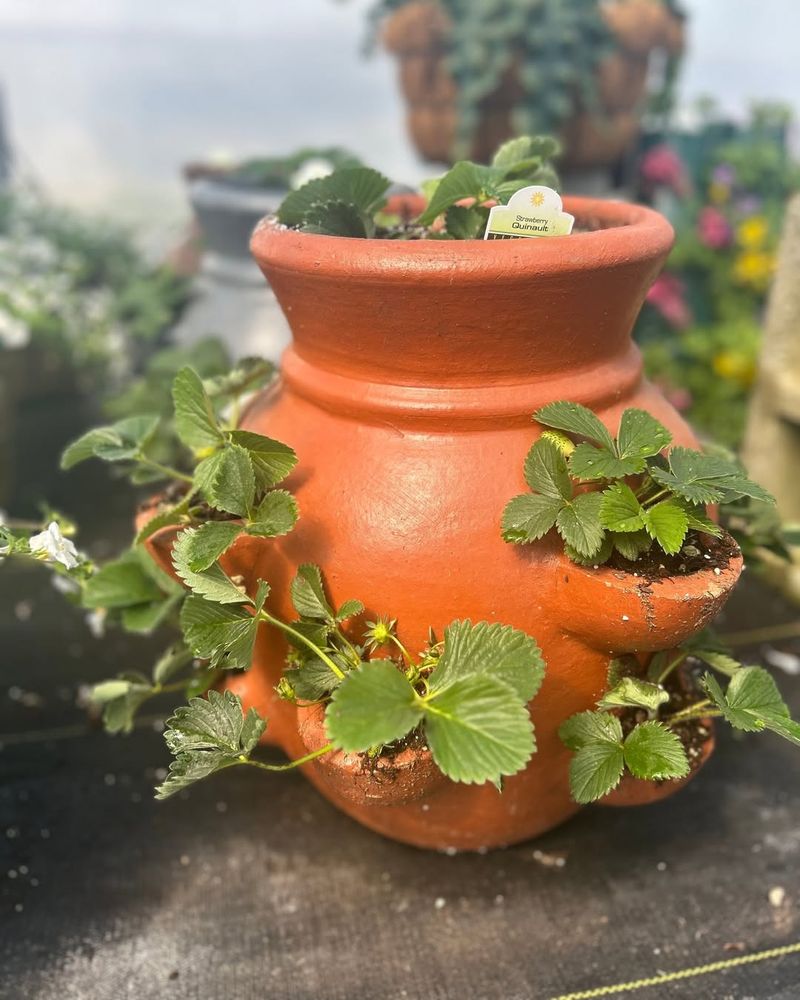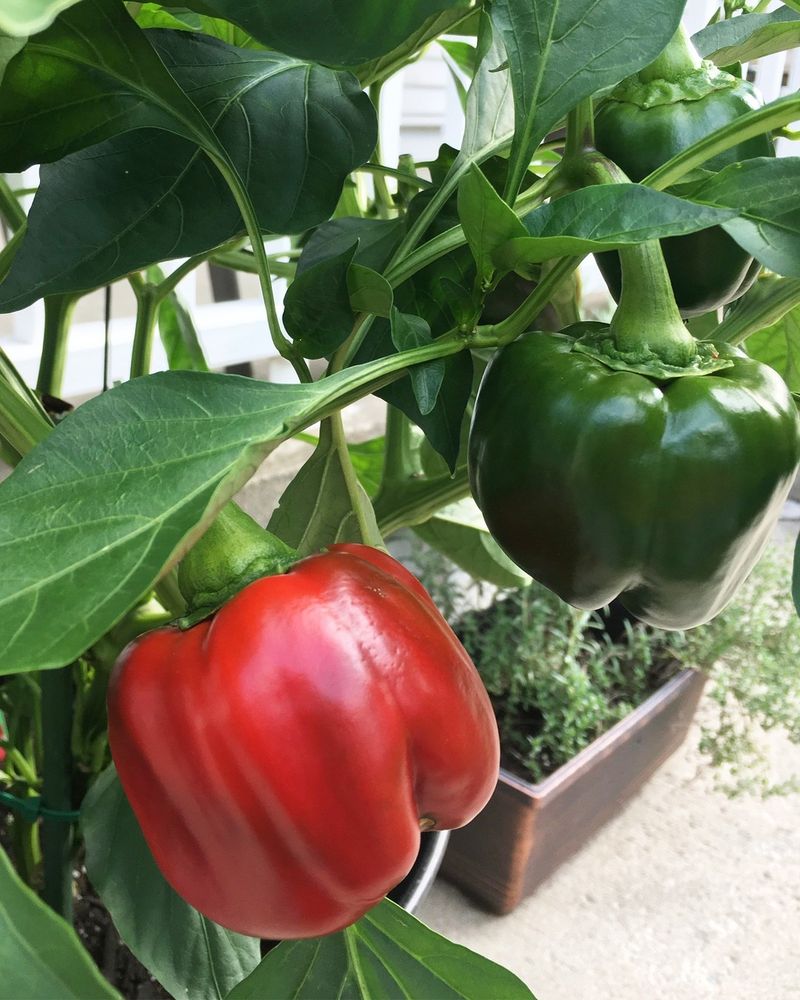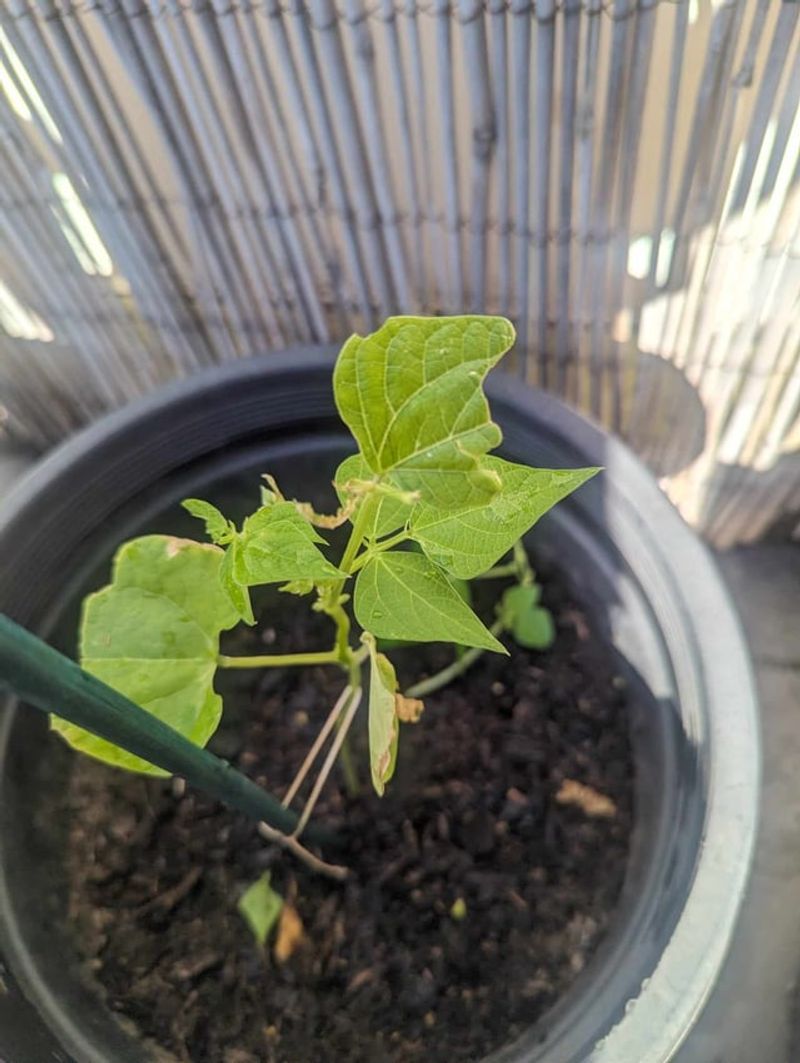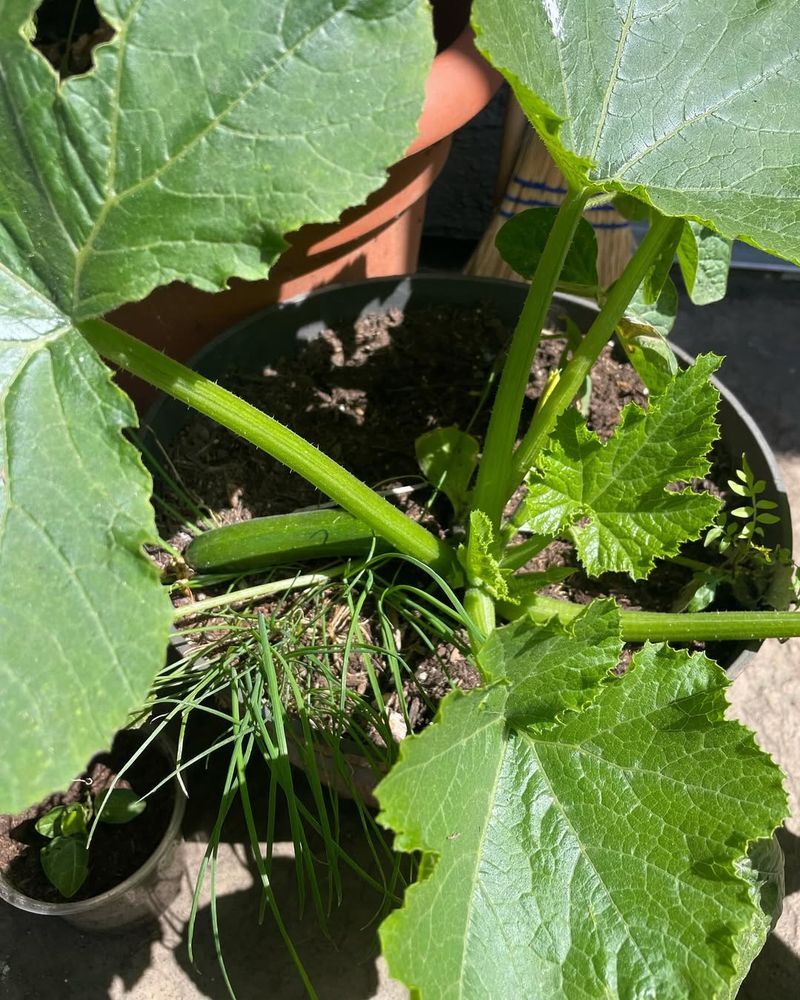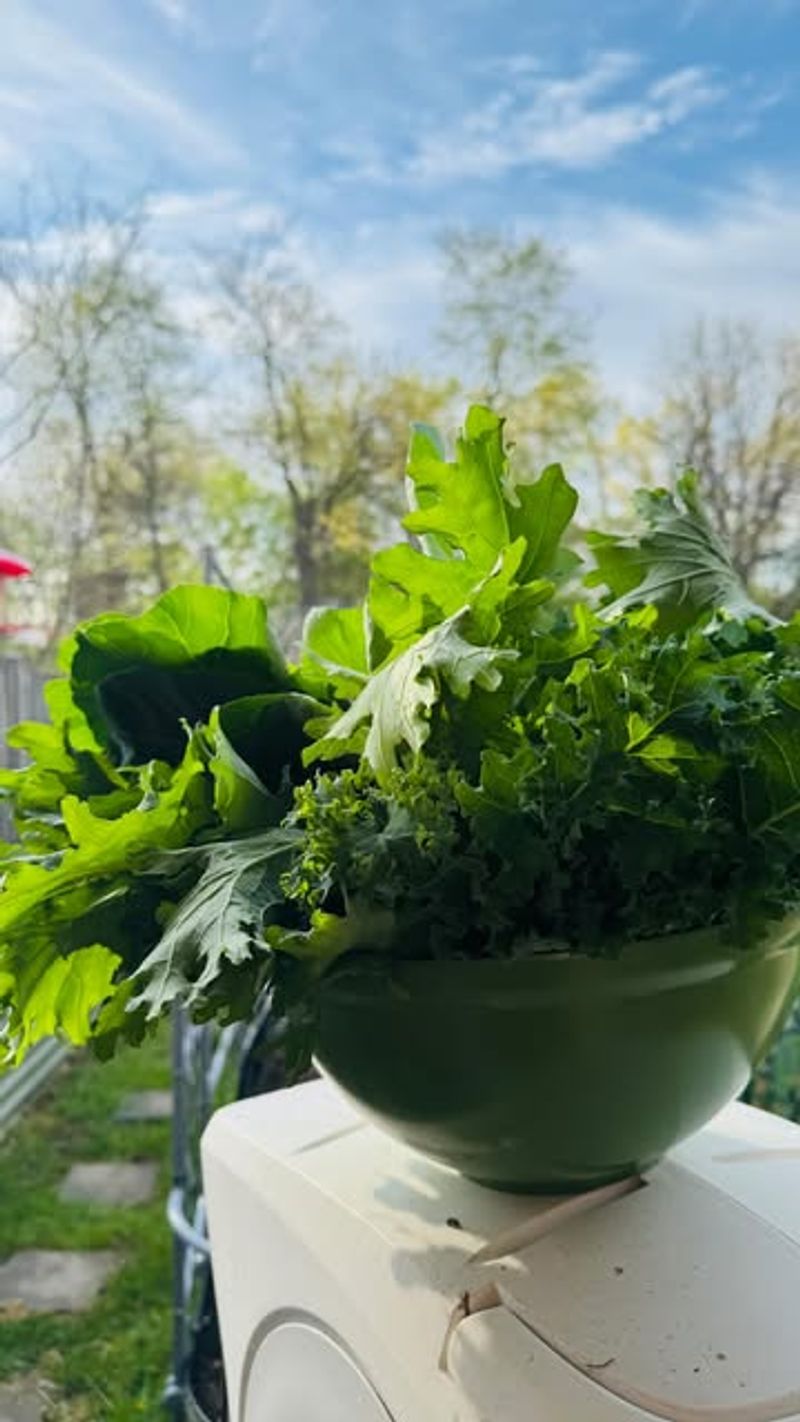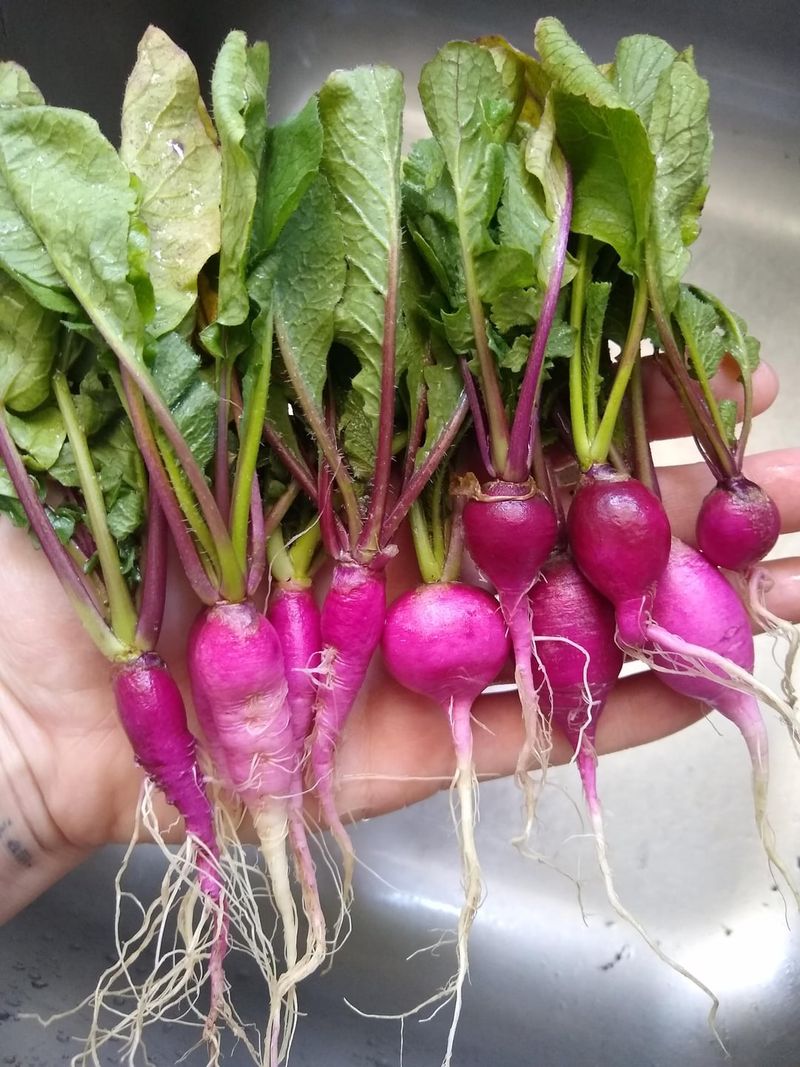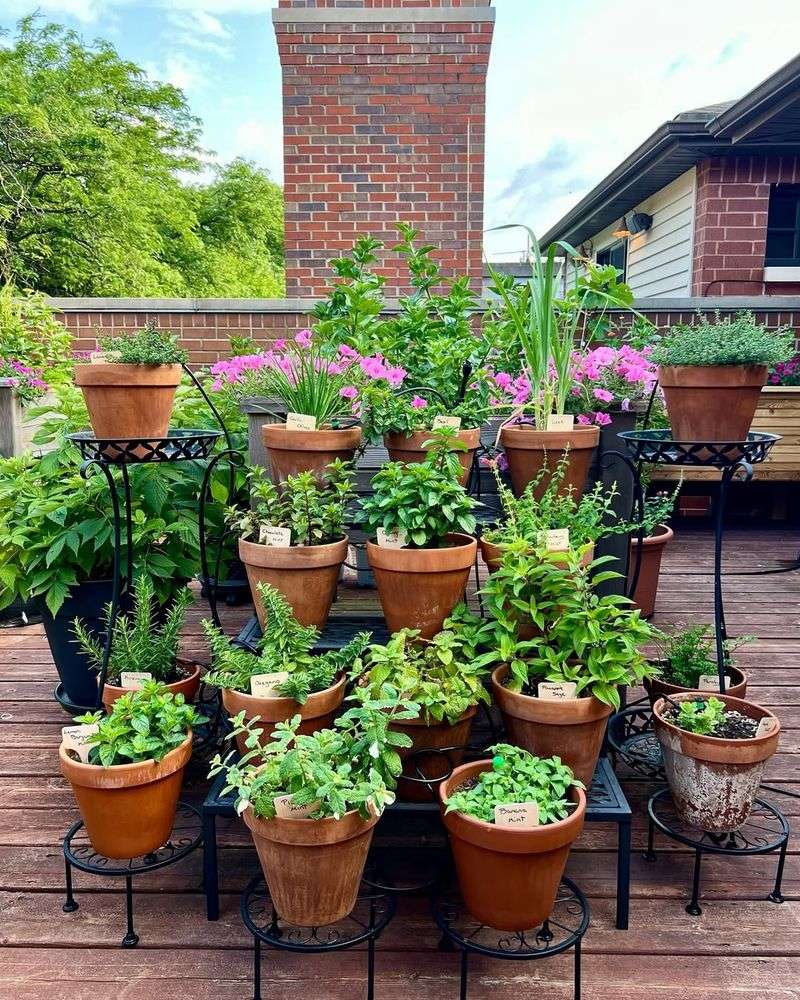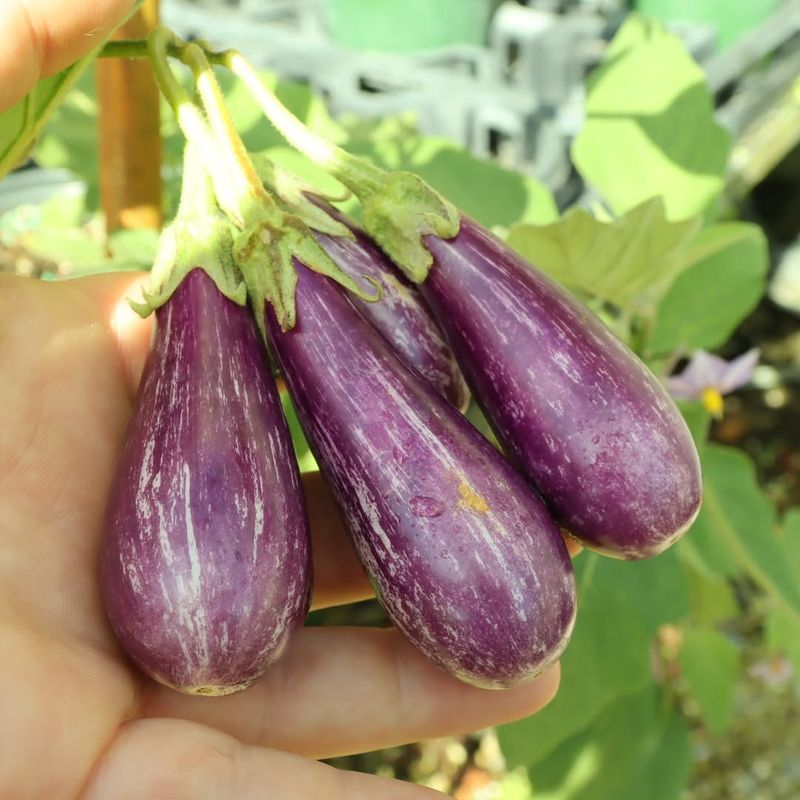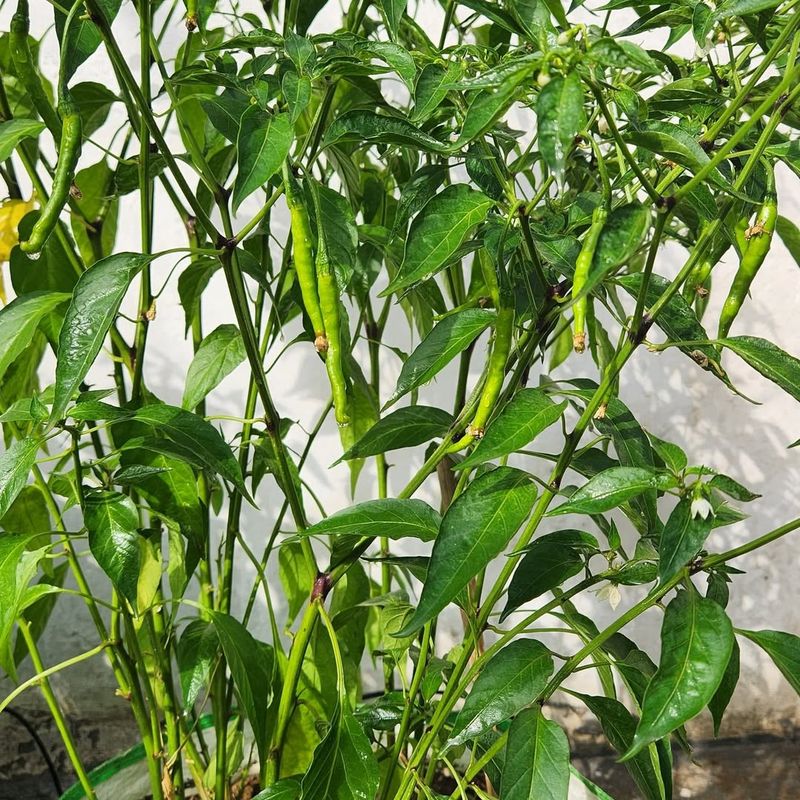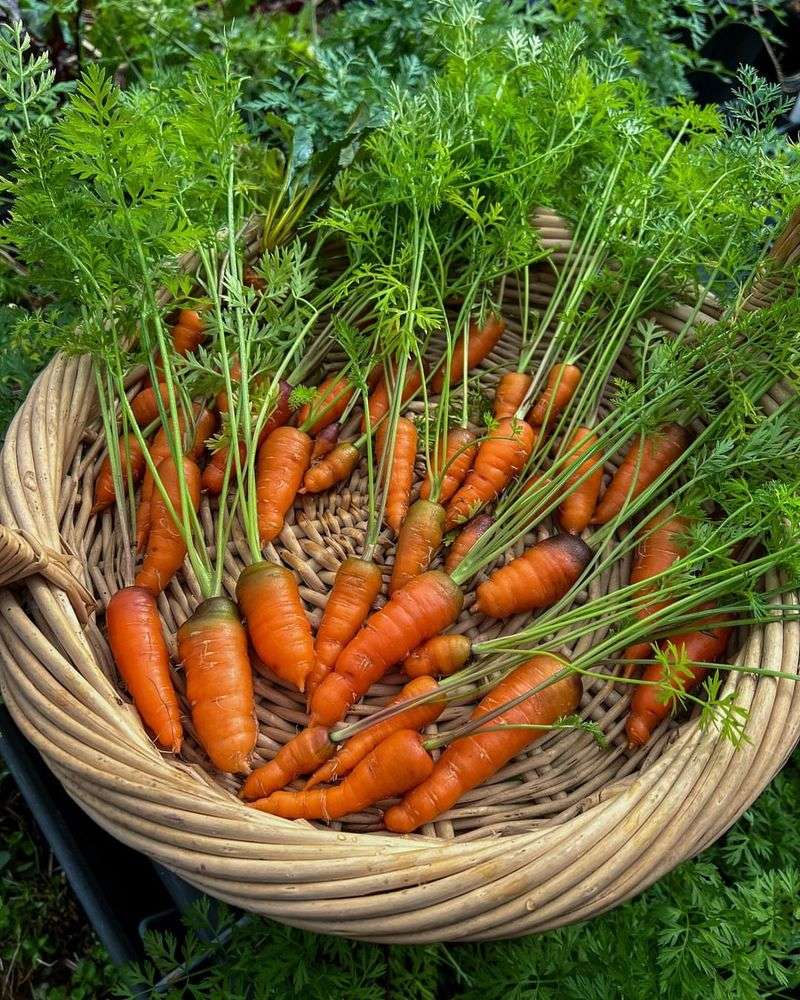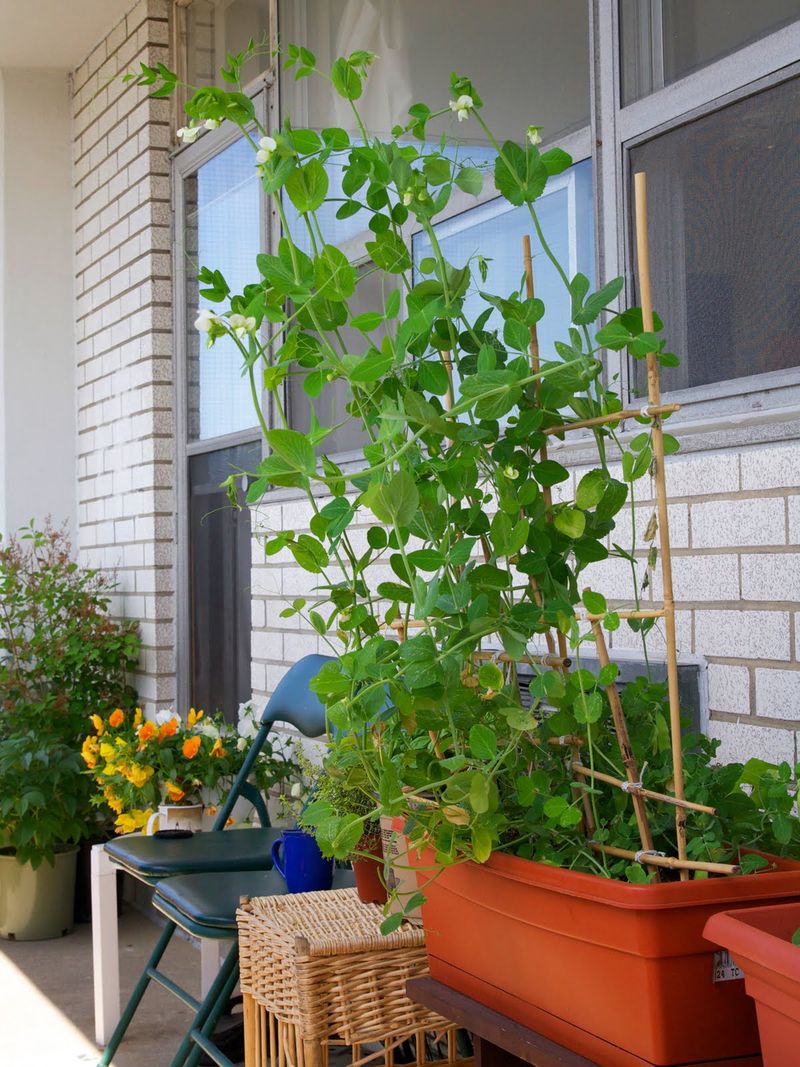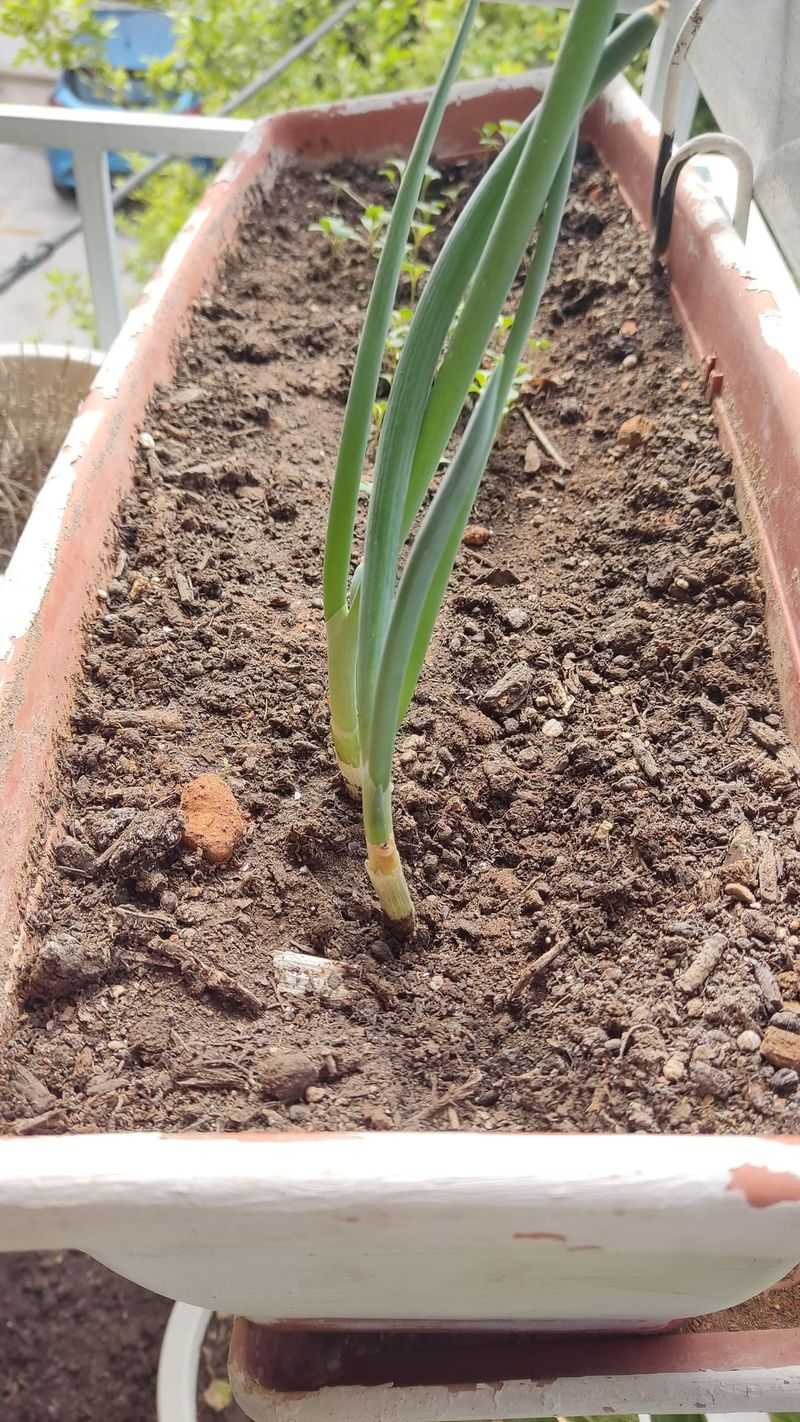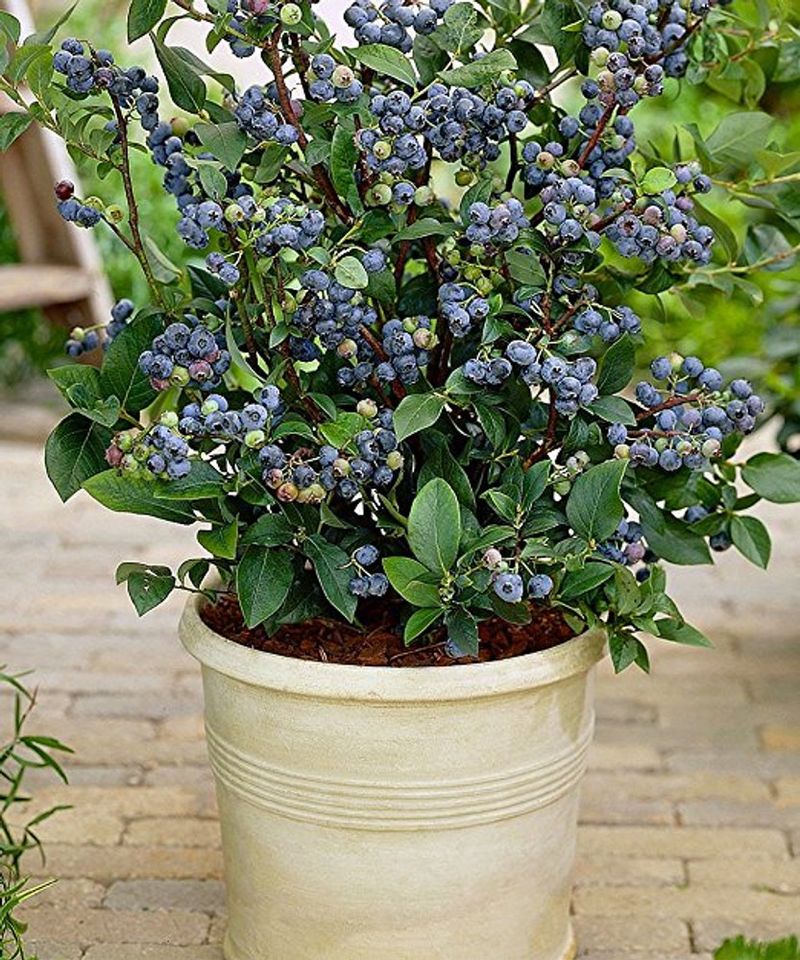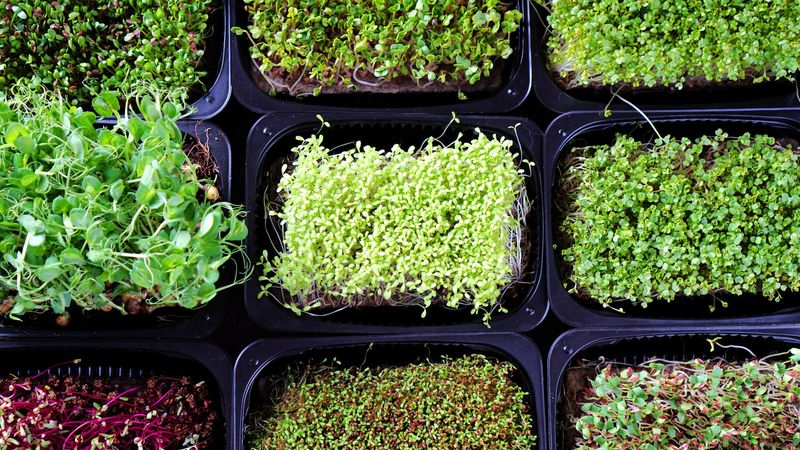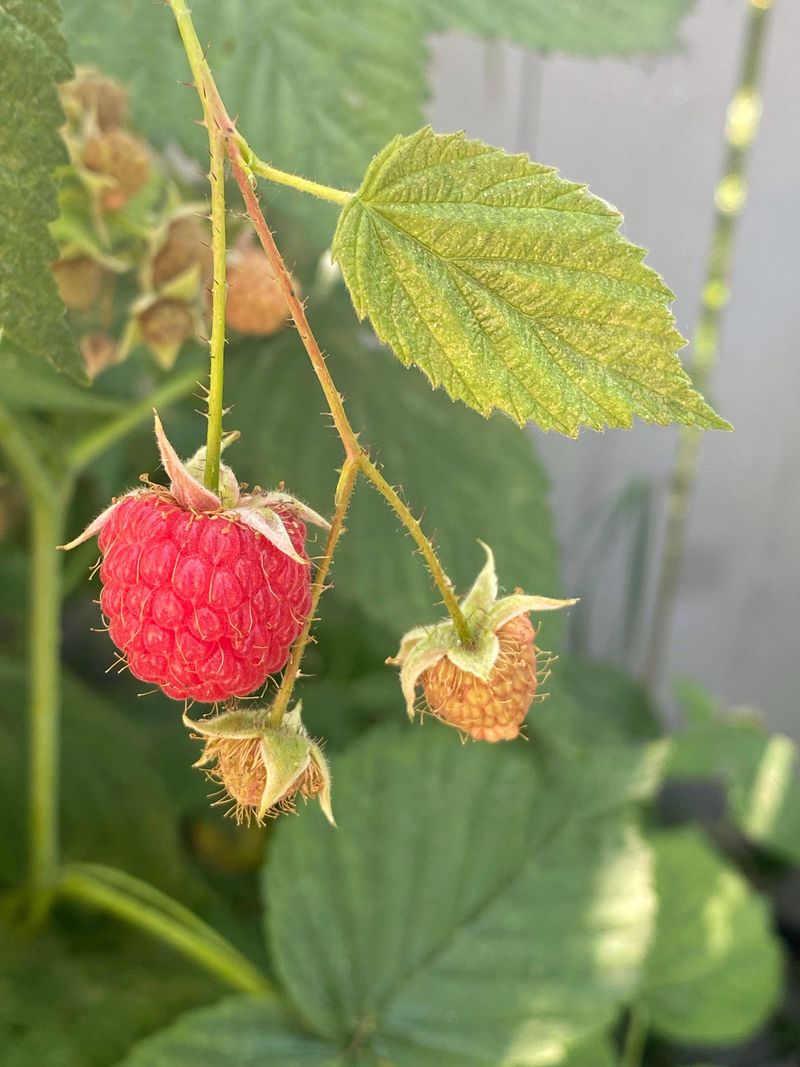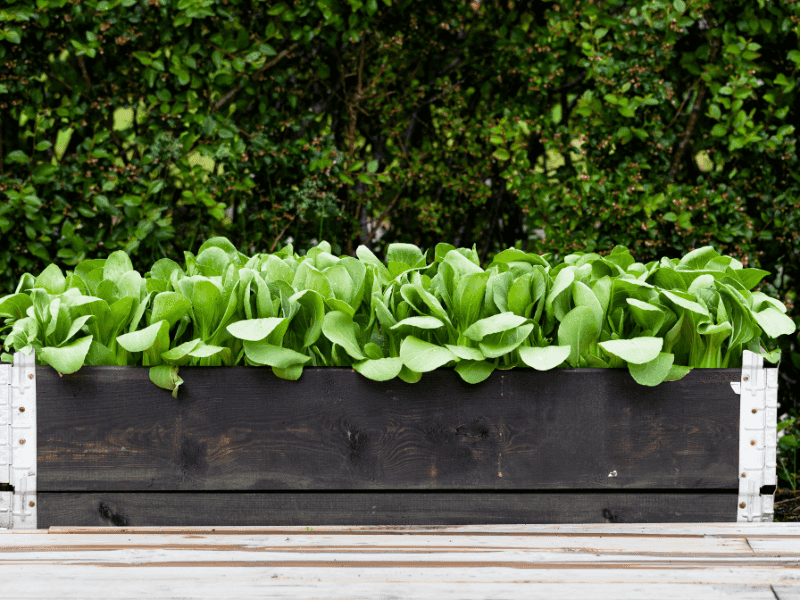Don’t have a backyard? No worries! Even a sunny balcony with some simple containers can turn into your own little garden oasis this summer.
There’s something special about growing your own fruits and veggies right outside your door — it’s fresh, satisfying, and doesn’t need a lot of space or effort.
I’ve put together a list of 17 delicious summer crops that thrive in pots, perfect for small spaces or city living like mine.
1. Cherry Tomatoes
Nothing beats the sweet pop of homegrown cherry tomatoes. Small varieties like ‘Tiny Tim’ or ‘Balcony’ were specifically bred for containers and produce abundantly in 5-gallon pots.
I’ve harvested over 100 tomatoes from just one healthy plant on my west-facing balcony. They need at least 6 hours of sun and consistent watering to prevent splitting.
Feed them every two weeks with tomato-specific fertilizer and pinch off suckers to focus energy on fruit production rather than excess foliage. Your reward: sweet little gems that rarely make it inside before being eaten!
2. Bush Cucumbers
Forget those sprawling garden varieties—compact bush cucumbers like ‘Spacemaster’ or ‘Salad Bush’ are perfect for container life. They grow upright with minimal vining and produce full-sized cukes in limited space.
Last summer, three plants in a rectangular planter gave me fresh cucumbers for daily salads all season. The trick is providing a small trellis for support and consistent moisture.
Hand-pollination with a small brush helps ensure good fruit set when pollinators are scarce on high-rise balconies. Harvest when fruits are medium-sized—about 4-6 inches—for best flavor and to encourage more production.
3. Strawberries
Strawberries thrive in hanging baskets or strawberry pots where their runners can cascade over the edges. Alpine or day-neutral varieties produce smaller but intensely flavored berries throughout summer instead of one big harvest.
My daughter checks our balcony strawberry pot every morning before school, often finding 3-4 perfectly ripe berries. They prefer morning sun and afternoon shade in hotter climates.
Replace plants every 2-3 years for best production. The shallow root system means you’ll need to water frequently, sometimes twice daily during heat waves, but the reward of sun-warmed berries makes it worthwhile.
4. Bell Peppers
Bell peppers actually produce better in containers than in garden beds in many regions. Their compact growth habit makes them naturally suited for pot life, with varieties like ‘Redskin’ and ‘Mohawk’ developed specifically for containers.
Start with a 2-3 gallon pot for each plant. Adding crushed eggshells to the soil before planting has helped me avoid blossom end rot, a common problem with container peppers.
Let peppers fully change color on the plant for maximum sweetness and nutrition. Green peppers are actually unripe, while red, yellow, and orange ones have developed their full sugar content and vitamin C.
5. Dwarf Beans
Bush beans deliver impressive yields from minimal space. A single 12-inch pot can produce enough beans for several side dishes throughout summer, with varieties like ‘Mascotte’ designed specifically for containers.
Plant seeds directly in the container after all frost danger passes. Unlike many vegetables, beans don’t transplant well, so skip starting them indoors.
They’re remarkably low-maintenance once established. My neighbor taught me to harvest in the morning when beans are crisp and to pick frequently—every other day—to stimulate continuous production. Each plant produces for about 3-4 weeks before slowing down.
6. Zucchini
Surprised to see zucchini on this list? Compact varieties like ‘Patio Star’ and ‘Eight Ball’ are bred specifically for containers and take up much less space than traditional garden types.
Use a 5-gallon container minimum—these are heavy feeders with substantial root systems. Hand-pollination becomes crucial for container zucchini, especially on high balconies where fewer insects visit.
One plant produced so much last year that I had to freeze shredded zucchini for winter baking. Harvest when fruits are small (6-8 inches) for best texture and flavor—wait too long and you’ll end up with baseball bat-sized vegetables that are less tender.
7. Leafy Greens
Kale, spinach, arugula and leaf lettuces thrive in shallow containers, making them perfect for balcony growing. A window box-style planter can supply fresh salads for weeks, especially if you harvest outer leaves while leaving the growing center intact.
These cool-season crops appreciate afternoon shade during summer heat. My north-facing balcony corner that gets morning sun produces tender greens even in July when garden lettuce has bolted.
Succession planting every 2-3 weeks ensures continuous harvests. For hot summer days, heat-resistant varieties like ‘Rouge d’Hiver’ lettuce or ‘Dinosaur’ kale stand up better than traditional types and develop sweeter flavors after light frost.
8. Radishes
For near-instant gratification, nothing beats radishes. From seed to harvest in just 21-30 days, they’re perfect for impatient gardeners and can be tucked between slower-growing plants to maximize space.
Sow seeds directly in containers at least 6 inches deep. The key is consistent moisture—let them dry out and they’ll become pithy and too spicy. I’ve grown them in repurposed takeout containers with drainage holes drilled in the bottom.
Try varieties beyond the standard red globe types. ‘French Breakfast’ with its oblong shape and white tip or watermelon radishes with green exteriors and pink centers add unexpected color to salads and crudité platters.
9. Herbs
Basil, cilantro, mint, and parsley transform ordinary meals into restaurant-worthy dishes—and they’re some of the easiest plants to grow in containers. Group herbs with similar water needs together: Mediterranean types like rosemary and thyme prefer drier conditions than basil and parsley.
Snip herbs frequently to encourage bushier growth. My kitchen windowsill herb garden provides fresh flavors year-round, though summer balcony pots produce much more abundant harvests.
Keep mint in its own container—it’s invasive even in pots and will overwhelm neighboring plants. Flowering herbs like basil should have blossoms pinched off to maintain leaf flavor, though allowing some to flower attracts beneficial pollinators.
10. Dwarf Eggplant
Miniature eggplant varieties like ‘Fairy Tale’ and ‘Patio Baby’ produce palm-sized fruits perfect for grilling or roasting. Their compact growth habit makes them ideal for containers while still delivering the distinctive eggplant flavor.
Choose a dark-colored pot to absorb heat—eggplants love warmth and will sulk in cool conditions. A 5-gallon container accommodates one plant comfortably.
Staking helps support branches when laden with fruit. Unlike their garden counterparts, these compact varieties don’t develop bitterness even when small, so you can harvest whenever the glossy skin looks fully developed. Four plants kept my family supplied with enough eggplant for weekly Mediterranean dishes.
11. Chili Peppers
Chili peppers thrive in containers and actually produce more prolifically when slightly root-bound. Their compact growth and colorful fruits make them both ornamental and practical for balcony gardens.
A single jalapeño plant in a 2-gallon pot produced enough peppers for countless batches of salsa last summer. Most varieties need minimal care beyond regular watering and occasional feeding.
Try growing several heat levels: mild poblanos for stuffing, medium serranos for everyday cooking, and superhots like habaneros for those who enjoy intense spice. The fruits can be dried, frozen, or made into hot sauce to preserve your harvest through winter.
12. Dwarf Carrots
Round or stubby carrot varieties like ‘Paris Market’ or ‘Thumbelina’ mature perfectly in containers just 8 inches deep. Their short, stocky roots develop fully without the depth needed for traditional long carrots.
Sow seeds directly and thin seedlings to 2 inches apart once they emerge. The most common mistake is overcrowding—I’ve learned this the hard way, ending up with carrot greens but tiny roots.
Keep the soil consistently moist until germination, which can take up to two weeks. These petite varieties often have sweeter flavor than their longer cousins and can be harvested when they reach golf ball size, perfect for snacking or roasting whole.
13. Sugar Snap Peas
Early spring and fall are perfect for growing sugar snap peas in containers. Their vertical growth habit maximizes limited balcony space, and the edible pods are a sweet treat straight from the vine.
Provide a trellis or tomato cage for support—even compact varieties reach 2-3 feet tall. Plant seeds directly in containers at least 8 inches deep, about 2 inches apart.
Harvest pods when they’re plump but still tender, before the peas inside fully mature. My kids call them “garden candy” and rarely do the peas make it inside. For continuous harvest in cooler climates, sow seeds every 2-3 weeks until hot weather arrives.
14. Green Onions
Green onions are perhaps the easiest edible to grow in containers and can be harvested multiple times. Simply snip the green tops as needed, leaving an inch above the soil, and they’ll regrow repeatedly.
Start from seeds, sets (small bulbs), or even regrow grocery store green onions by planting the white root ends with a bit of green attached. A 6-inch pot can accommodate about 9 plants.
Unlike many vegetables, green onions tolerate partial shade and can be tucked into corners of the balcony that don’t receive full sun. I keep a pot by the kitchen door for easy access when cooking, harvesting just what I need for each meal.
15. Blueberries
Dwarf blueberry varieties like ‘Top Hat’ and ‘Northsky’ are perfectly suited for container life. These compact bushes grow just 18-24 inches tall but produce full-sized, sweet berries.
They require acidic soil (pH 4.5-5.5), unlike most garden plants. I mix peat moss and coffee grounds into the potting mix to maintain acidity. A 5-gallon container is sufficient for one plant.
Choose self-pollinating varieties if you only have space for one bush, though having two different varieties improves yield. The attractive white spring flowers and bright fall foliage make blueberries ornamental additions to balcony gardens long after berry season ends.
16. Microgreens
Microgreens deliver gourmet flavors and impressive nutrition from minimal space. These baby versions of familiar plants like sunflowers, peas, radishes, and mustard are harvested just days after germination when nutrient density peaks.
Shallow trays just 2 inches deep work perfectly. Seeds are planted densely, grown for 7-14 days, then cut at soil level when the first true leaves appear.
A sunny windowsill works fine for most varieties, making them ideal for year-round growing. My apartment-dwelling sister maintains a rotating microgreen system that delivers fresh harvests every 3 days from just one square foot of space on her tiny balcony.
17. Patio Raspberries
Specialized raspberry varieties like ‘Raspberry Shortcake’ grow just 2-3 feet tall with a naturally compact, thornless habit perfect for containers. Unlike traditional raspberries that spread through runners, these stay contained within their pots.
A 10-gallon container gives enough root space for healthy production. First-year canes produce foliage while second-year canes bear fruit, so avoid pruning everything back at once.
Morning sun and afternoon shade help berries develop best flavor. My container raspberry surprised me by producing two crops—a main summer harvest and a smaller fall bonus. The berries are smaller than garden types but pack intense sweet-tart flavor.
18. Bok Choy
Baby bok choy varieties mature quickly in containers, often ready for harvest just 30 days after planting. Their shallow root systems make them ideal for window boxes or shallow containers where other vegetables might struggle.
Plant seeds directly or transplant seedlings 6 inches apart. They tolerate cooler weather, making them perfect for early spring or fall balcony gardens.
Harvest the entire plant by cutting at soil level, or remove outer leaves individually for a longer harvest period. A neighbor taught me to grow bok choy in recycled plastic salad containers—ironically perfect for growing the ingredients for your next salad.

